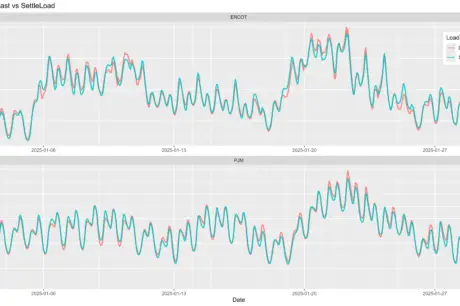The emergence of SaaS solutions and cloud applications has brought about numerous innovations and almost endless possibilities. However, it has also created confusion for many.
As an umbrella term, cloud-based applications can generally be divided into two categories: Native Cloud and Cloud-Enabled.
It’s critical to know the differences between these application types when investing in your technology systems, so you can choose the right solution for your business.
What are Native Cloud Solutions?
All native cloud solutions are indigenous to the cloud. This means they’re exclusively developed, tested, deployed, and managed within the cloud environment.
Technically speaking, these kinds of solutions harness the real power of cloud infrastructure and are hosted as multi-tenant instances. This is often referred to as a micro-services architecture, utilizing independent but connected modules.
Characteristics of Native Cloud Solutions
1. Superior Scalability
Native cloud applications are intrinsically adaptable and scalable, as you can identify, make, and release alterations to discrete modules within the cloud environment in real-time.
2. Greater Cost-Effectiveness
With native cloud solutions, you don’t need large hardware or software investments. They are usually available via a license or subscription plan that you can activate in minutes.
You can normally include additional users for a nominal fee and also avoid large costs for software updates and maintenance work. Therefore, native cloud solutions tend to be more cost-effective.
3. Improved Time Savings
Native cloud applications bring about massive time savings. That’s because they are quick and easy to implement, without needing any special hardware or software configurations.
4. Enhanced Connectivity for IoT
Native cloud connectivity and solutions are the mainstays of developing a connected business. They allow companies to overcome the restrictions of conventional connectivity models, which are inflexible and costly for IoT and prolong time-to-market and time-to-profit.
A native cloud environment is a plug-and-play, preventing the need for obstructive contracts and hardware-based APIs.
What are Cloud-Enabled Solutions?
Cloud-enabled applications are created using legacy infrastructure systems. Unlike native cloud applications that include modules developed with a service-based architecture in mind from the beginning, cloud-enabled solutions are created by taking current software (such as, on-premises and desktop applications) and assisting them in some way to use cloud computing resources.
Characteristics of Cloud-Enabled Solutions
1. Less Flexibility
Cloud-enabled solutions are normally implemented in-house or using the legacy infrastructure. This adversely impacts the flexibility and adaptability of these solutions because updating and upgrading one module can inhibit the entire system.
2. Inefficiency
Owing to their base infrastructure, cloud-enabled solutions also need and depend on manual upgrades. This can cause interruption and shutdown to the entire application and adversely impact businesses in terms of time, money, and productivity.
3. Higher Costs
Cloud-enabled solutions usually incur higher costs, as they need more man-hours to accommodate the fluctuating requirements. These solutions have to be personalized for the particular installation environment and aren’t a one-size-fits-all solution in general.
Native Cloud vs. Cloud-Enabled Solutions: What to Choose?
By 2022, around 90% of all new applications will feature microservices architectures that enhance the capability to debug, update, design, and leverage 3rd party code. Moreover, 35% of all production applications will be native cloud. Therefore, it’s clear that the future belongs to native cloud applications.
The pace of disruption and innovation in retail energy will only accelerate over the coming years. As we shift towards a distributed energy world new business models continue to emerge, while the rise of the fully connected consumer will unleash a wealth of new data and product opportunities. In this context native cloud applications will be critical to providing energy retailers with the agility, flexibility, and scalability they need to adapt and thrive.
With the right technology investments in place, you can place your focus on your strategic vision, capitalize on new market opportunities, and stop being held back by your IT systems.
Get in touch today to learn more about native cloud applications for retail energy, and the benefits they can bring to your retail energy business.
Ruediger Neubauer, VP Sales Agility CIS












